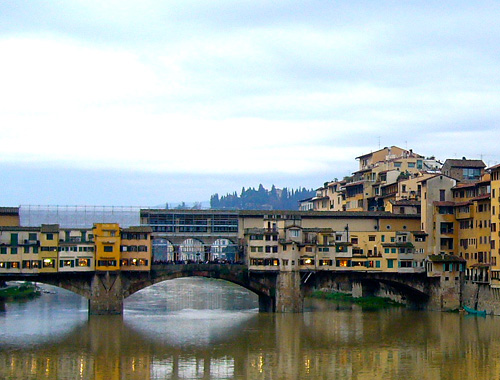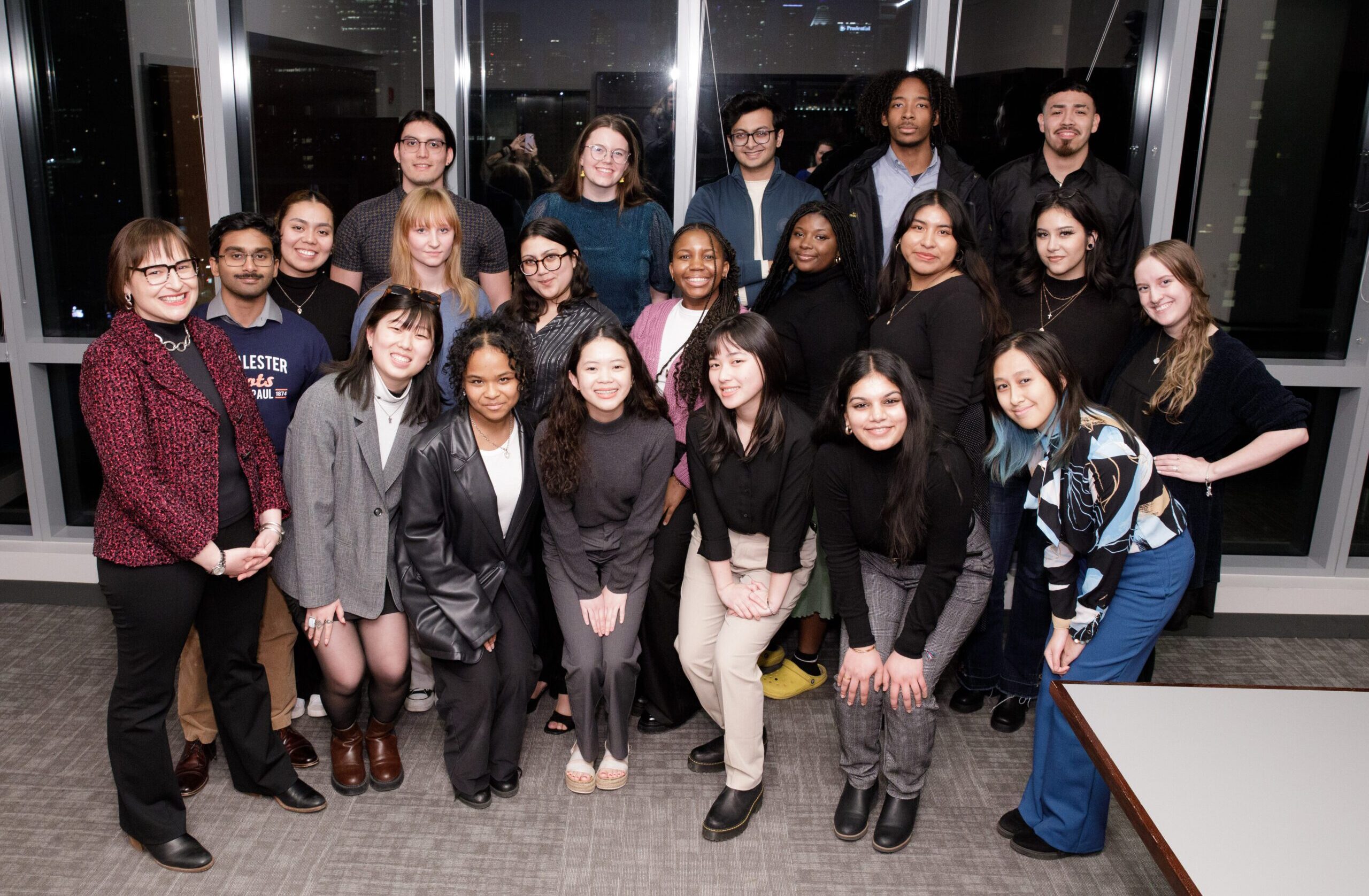Jodie Mariotti, who will begin this fall as the Director of off-campus study programs in Florence, Italy, is a teacher and an art history scholar. She’s a skilled translator, fluent in three languages, and a longtime resident of Florence.
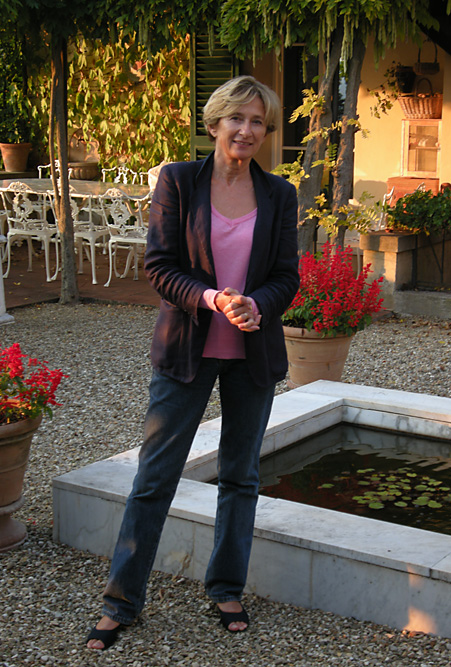
Jodie Mariotti in the garden of her home in Florence.
Photo courtesy of Jodie Mariotti
She also makes great olive oil, grew up in the Midwest and, for a few years, was a farmer’s wife.
And to top it off, she discovered a batch of 500-year-old documents that yielded some juicy tidbits about a 16th century Florentine woman whose face we all recognize.
Yes, Mariotti has interesting stories to tell. She also, clearly, brings a wealth of experience to Florence: Arts, Humanities, & Culture in the fall and London & Florence: Arts in Context during the spring semester.
Joining select company
For the past 20 years, Mariotti has taught college students from the U.S. who are studying off-campus in Florence, the first five years with Middlebury College’s program and the rest with a program operated jointly by the University of Michigan, the University of Wisconsin, and Duke University.
Her teaching style fits right in with the approach of the Florence Program, which emphasizes on-site teaching at the museums, galleries, churches, and monuments of Florence and other Italian cities. “I think the use of the city is important, and it’s so easy because (the program is) right in the very heart of Florence,” said Mariotti. “It’s also easy to hop on a train and go to Prato, Pistoia, Pisa, (or) Lucca, where there are significant monuments to be compared to Florence.”
“Being an American and having lived here for so long, and also teaching American students, I think I understand them, pretty much, because I remember myself when I first was here,” Mariotti said. “The things you know, the things you don’t know, and also about the culture and the ambiance. Sometimes it’s not easy, the adjustments. Seemingly it’s the same mentality (as in the U.S.), but it’s not the same mentality, and that’s something that (students) learn as they’re here, and that’s part of the experience for them.”
As the Florence Programs Director, Mariotti will join very select company. She succeeds Janet Smith, who is retiring after a remarkable 35-year career in Florence, during which she taught generations of students from ACM colleges about Renaissance art history and introduced them to contemporary Italian culture.
A love of language, travel, art history – and an Italian
Mariotti’s love of language and travel goes back to her teenage years, when she spent a summer during high school studying language in France. “It was wonderful,” she recalled. “I think that might have been one of the determining factors in my living abroad.”
Three summers later, while a student at the University of Iowa, Mariotti returned to Europe, traveling with a friend across the continent, from Paris, through Italy and Greece, and all the way to Istanbul.
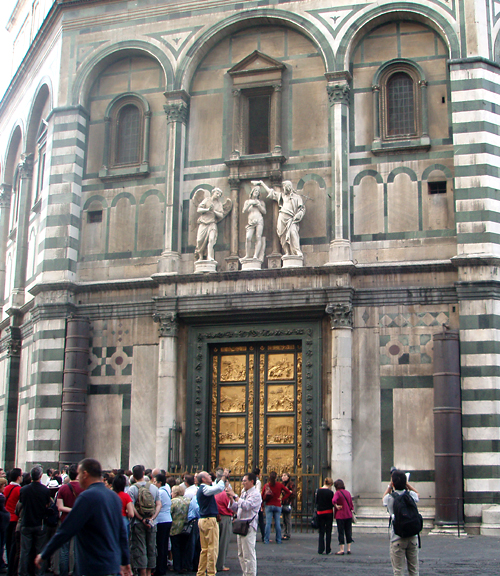
The Baptistery in Florence.
Photo courtesy of Heather Everst
Her third trip to Europe was a college graduation gift from her parents – an opportunity to see the places and art she had studied as an art history major. Mariotti spent the bulk of her time in Florence, planning to return to the U.S. and apply to graduate school.
“I made a number of contacts here in Florence and doors started opening up,” she said, “and so I decided (to) spend a good deal of time here in the interim before going to graduate school.” During that interim, she met an Italian, Sergio Mariotti, and they fell in love. Plans changed. She moved to Italy, they got married, “and that’s why I’m in Florence,” she said.
Graduate school went on the back burner, but studying did not. To learn Italian, Mariotti enrolled in a rigorous three-year program – including simultaneous translating – and became a Certified Parliamentary Interpreter. Through the years, she’s regularly worked with art historians and museums – Antonio Natali, Director of the Uffizi Gallery in Florence is a close colleague – to translate texts, catalogues, exhibits, conferences, and articles.
Graduate school may have been delayed, however, “I needed to get back to the art history world,” said Mariotti. “I didn’t know what I was going to do with (a graduate degree), but I knew I loved it so much that I was going to pursue it. That was when I started my studies with Mina Gregori, an internationally-renowned scholar who was then the head of the art history department at the University of Florence.”
The Country Life |
||||||
| For a few years, Jodie Mariotti was, indeed, a farmer’s wife. She and her husband – neither of whom had farmed before – bought a farm in the Italian countryside, where they made wine and olive oil and lived in a centuries-old house with a double loggia. | It sounds like something out of a novel.
“I should have written Under the Tuscan Sun, I’ll tell you that,” said Mariotti, laughing. “I had a house in the countryside way back before she did, remodeled an old farmhouse just the way she did. I didn’t have the creativity, I guess, to say ‘I think I’ll write a book.'” When Mariotti was in graduate school, they sold the farm and moved close to Florence – just ten minutes from the Ponte Vecchio – where they have a small garden and still make their own olive oil. The farm “was a lovely place,” Mariotti said, but moving back to the city “was OK, because we were ready to do that. You know, it’s hard work farming, it really is.” |
|||||
|
Ponte Vecchio in Florence. Photo courtesy of Giulia Hines |
||||||
Old documents, new discoveries
Mariotti’s period of specialty is the late 1400s and early 1500s. Since receiving her doctorate in 1990, she has been an active scholar herself, producing a steady stream of articles, essays, lectures, and presentations. She’s also written two books. The first was on the Renaissance painter Gerino da Pistoia, a contemporary of Raphael and the subject of Mariotti’s dissertation. The second was the result of a remarkable discovery she made a few years ago while combing through archives as part of her research on a painting.
“Lo and behold, I came across a Medician manuscript that is actually an account book of Cardinal Giovanni de’ Medici, who became Pope Leo X,” Mariotti said. “It dates from the period of the return of the Medici after an 18-year exile, and regarding the months leading up to and following his election as Pope on March 11, 1513. To make a long story short, I realized that the painting I was trying to research was actually commissioned by Mona Lisa.”
Yes, that Mona Lisa.
Mariotti discovered a trove of documents on Mona Lisa and her husband, Francesco del Giocondo, including evidence of a daughter of the couple that art historians did not know existed. She published articles about her discoveries in 2003, but that wasn’t the end of it.
“It led me to begin to speculate on other historical factors, and that brought me to write the book that came out last November, (which) is a hypothesis on the relationship between the del Giocondo family and the Medicis that no one realized existed, because no one had found the documents that I had found.” She’s also written an article based on the documents that will be published this fall.
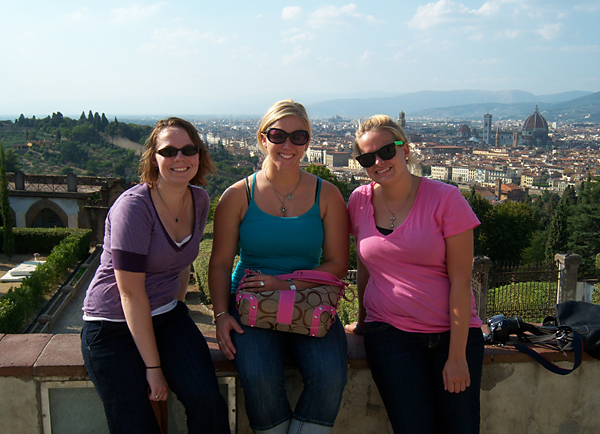
Florence Program students at San Miniato al Monte.
Photo courtesy of Kellie Griffin
Walking through the centuries
Mariotti is looking forward to teaching students from ACM colleges. She recalled her first glimpses of Florence when she was their age, and told about how she likes to introduce students to the city.
“San Miniato al Monte is where I start all of my orientations to Florence, because it’s above the city and you get a beautiful overview of the city. The church is perfect. It is the earliest – along with the Baptistery – standing building in the city. It’s Romanesque from the 11th century. If you walk through that building you walk through three or four centuries (and) very explicitly you can explain the transition from Romanesque to Gothic and so on. It’s a great church. It’s one of the most beautiful, as well, in Florence.
“From there you see all of Florence, and then there are the steps from San Miniato that are the old walkway that lead right into the city, through one of the old city doors, and you’re down in the fabric of the city in less than five minutes. That’s the side of town where there are still the 14th century walls…. You actually can see the wall, see the inner city with the roofs and the tiles, and then right outside the wall are fields with olive trees and vineyards. So you really get the sense of the country and the city, almost as though you’re looking at a painting from the 13th or 14th century.
“It’s a wonderful place to start students off, and I think it will always be one of my favorite places.”
Links:
- Florence: Arts, Humanities, & Culture (fall semester)
- London & Florence: Arts in Context (spring semester and Florence only winter trimester/quarter option)i






